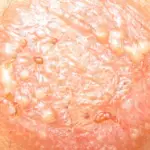The need to find natural alternatives to plastic and artificial materials has never been greater than it is now, because of the warming climate.
Plastic containers have contributed to environmental damage, and now even consumers are searching for better, more sustainable alternatives.
Natural fibres are proven to be the most popular choice. They’re hair-like raw materials derived from plants, animals, and elements.
Non-woven textiles, such as papers or felt, can be made from them. Natural fibres can be weaved into a fabric or spun into threads.
Natural fibres come in a variety of shapes and sizes, and they can be used to make a variety of items.
Natural or synthetic fibres may be identified in all fabrics (or a combination of the two).
Natural and synthetic fibres both seem to have advantages and disadvantages; natural fibres originate from plants and animals, whereas synthetic fibres are created from synthetic chemicals, and each is regarded differently in the textile sector.
The Origin Of Natural Fibres
Natural fibres have been used for textiles and other purposes since well before recorded human history began.
Natural fibres were possibly first documented in the 7th and 6th century BCE, as wool and linen garments were unearthed in Swiss excavation sites.
Ancient humans also employed a variety of vegetal fibres. Hemp is thought to be the first plant grown for fabric. Its origins can be traced back to Southeast Asia.
It eventually moved to China, where it was farmed as early as 4500 BCE, according to legend. By 3400 BCE, Egypt had mastered the art of weaving and spinning linen, whereas India had mastered the art of cotton spinning as early as 3,000 BCE.
What are natural fibres?
As mentioned above, natural fibres are derived from organic matter, and can be used to create environmentally friendly goods and textiles. The most common natural fibres include:
Cotton
Natural textiles are by far the most desirable and adaptable. Cotton is a comfortable, long-lasting, and low-maintenance fabric.
Cotton is popular for bedding and clothing because of its softness, hypoallergenic properties, and resistance to mites.
It could also be used to make artwork, robes, scarves, warm clothes, furniture, dish cloths, kitchen towels, and drapes, as well as grocery bags and other types of bags such as gift bags.
Linen
Linen has a long history dating back over 8,000 years. Notwithstanding its antiquity, it is still very successful and well-liked. It comes from the flax plant, and its safe and renewable qualities makes this one of the greatest natural fibres available since it is biodegradable and long-lasting.
Other advantages of linen also include resistance to light, the fact that it does not shrink, the fact that it is immune to filth, spills, insects, and dirt, the fact that it does not pile, the fact that it is hygienic and machine washable, and the fact that it does not have static electricity.
Curtains, little crafts, tablecloths, towels, chair coverings, placemats, and coasters are just a few examples of what linen can be used for.
Silk
The silkworm spins this protein-based material. It has a lovely sheen and a number of appealing qualities, including quality and rigidity, drapes beautifully, is flexible, and hypoallergenic.
Furnishings, bedding, paintings, wall art, and draperies can all be made with silk fibre.
Jute
This fibre is completely biodegradable. It features lengthy, thick, and lustrous fibres that may be spun into stiff, strong threads.
Jute is well known for producing beautiful, reusable bags that can readily substitute disposable bags.
Jute bags are available in a variety of forms, sizes, and styles. Carpets and cords can be made from jute, but not clothing.
Wool
Sheep, goats, alpacas, llamas, as well as other animals’ hair are used to make wool.
Cashmere, angora, mohair, and other wool materials are available.
Wool is a soft, washable, and long-lasting material. Because of the lanolin compounds from the mammals, it is resistant to water, and it is commonly used to manufacture clothing and cold-weather clothing such as jumpers and coats.
What Are The Advantages Of Natural Fibres?
Natural fibres have various advantages. Most of this is why, in these times of terrible environmental limits, they have become so fashionable. The most common advantages of natural fibres include:
- They’re environmentally friendly
Natural fibres are beneficial to both people and the environment. They have a favourable environmental impact, and if widely accepted, they can give alternative solutions to plastics and artificial alternatives. They’re eco-friendly, biodegradable, long-lasting, and breathable.
- They’re absorbent
Natural fibres can also wick sweat, which is a wonderful benefit. Moisture-wicking fabric gives for added comfort and helps to move moisture away from the body by allowing airflow through the material. They make excellent clothing, particularly for hot climates. Natural fibres have been used for thousands of years. They are the preferred option over plastic and other synthetic materials, which have contributed greatly to waste and destruction of the environment. Jute fibre, in particular, has proven to be useful in the creation of personalised shopping bags that give colour and individuality to your shopping excursions.
- They’re resistant to dirt
Some natural fibres have outstanding filth, mite, and mould repellent properties. These are fantastic features which would make excellent linen and grocery bags since they can be used multiple times before needing to be cleaned, sparing you time.
What About Synthetic Fibres?

Chemical methods are used to create synthetic fibres by humans. Synthetic material manufacturing is the most common in the world, surpassing production of cotton.
They are created from polymers that have been polymerized. Synthetic fibres are made up of long fibers that can be cut to any length.
Synthetic fibres are typically unaffected by microbes and biological beings, yet the sun’s UV rays will damage them over time.
Polyester, nylon, acrylics, elastane, Lycra, viscose, and rayon are synthetic fibres derived from petroleum, coal, and petrochemical products that are widely used in the manufacturing industry.
Synthetic fibres are made with potentially hazardous substances. Textile dermatitis is a skin condition caused by contact with synthetic fibres that causes burning, itching, and swelling.
Polyester is made from dihydric alcohol and terephthalic acid, both of which are highly hazardous compounds. Both substances remain on to the fibre and can enter the bloodstream through wet skin.
Dermatitis and lung disorders can result as a result. As rayon is made, carbon disulfide, sulfuric acid, alcohol, ammonia, and caustic soda are needed.
Muscle discomfort, nausea, migraines, and insomnia are all possible side effects of these substances.
When making acrylic fibre, acrylonitrile is employed. Even in modest concentrations, it is poisonous and carcinogenic. The production of nylon is based on petroleum.
Throughout the manufacturing process, it is subjected to a variety of harsh chemicals, including caustic soda, sulphuric acid, and formaldehyde.
Even during whitening and softening procedures, formaldehyde, propene, limonene, and terpineol are utilised. The fabric retains many of these poisons. Petroleum-based synthetic fibres, such as nylon and polyester, are not recyclable.
More than 20% of commercial water contamination is caused by the synthetic fibre sector. Water that has been poisoned is pushed into streams, oceans, and beaches, killing marine life.
Hazardous chemicals used in synthetic fibre production represent a significant risk to persons and the environment.
Conclusion
Getting rid of all synthetic materials in your closet can help your health and the environment.
Those of us with sensitive skin can benefit far more from switching to natural textiles in their closet.
You are sure to discover ideas in some of the beautiful and contemporary natural textiles that are available.






